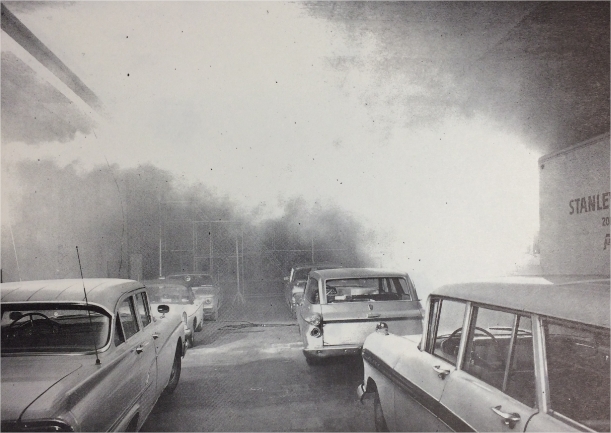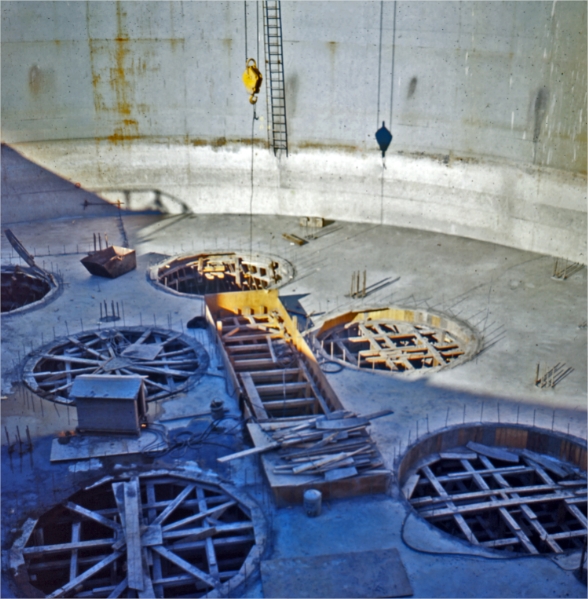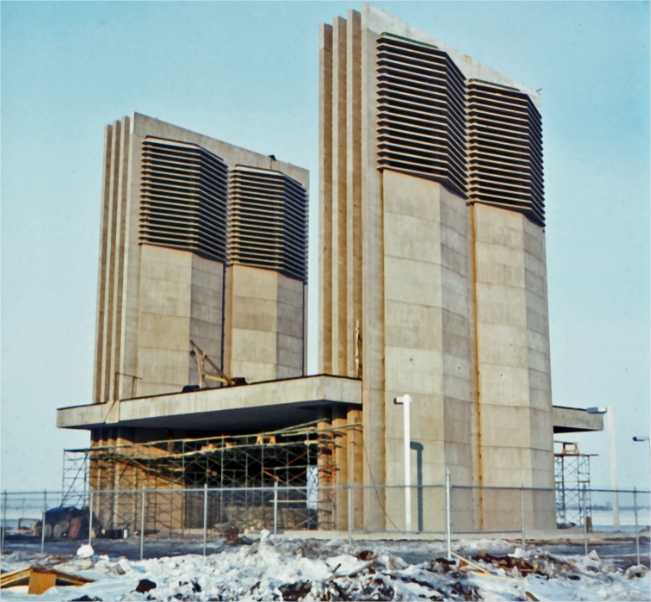Ventilation

Full-scale testing of different ventilation scenarios at the Canadair factory, 1963.
Quebec Transport Ministry Archives
The parameters for the ventilation system were calculated to minimize carbon monoxide build-up. In the event that vehicles had to remain stationary inside the tunnel, maximum ventilation allows for a complete air change within the tunnel in about two minutes. This semi-transverse ventilation system uses a total of eight ventilation fans (four fresh air intakes, and four stale air exhausts) that are distributed into two towers that can be seen from outside the tunnel. Fresh air is pumped into the tunnel through the air inlets and distributed via a central supply duct. Stale air flows out via the tunnel’s extremities and the ventilation towers.

Ventilation fan inlets in the base of the south ventilation tower, 1966.
Société d’histoire des Îles-Percées
In case of fire, the ventilation system can be reversed to pump smoke out through the air inlets. Inside the tunnel, several carbon monoxide detectors allow for the automation of the ventilation to compensate for saturation. Fresh air gets injected into the tunnel at a rate of 90,614 cubic metres per minute, with a total ejection capacity calculated at about 96,277 cubic metres per minute. The base of the south ventilation tower was built on the apex of the inclined portion of the tunnel, whereas the north tower was a prefabricated structure that was first immersed, and then connected to the no. 7 caisson. The visible portions of both towers were built in Saint-Eustache and later assembled on-site.


